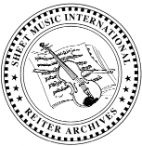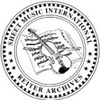Given that the piano is currently one of the most popular instruments, it should come as no surprise that many people are interested in learning how to read piano notes! For any pianist, being able to read the notes on a piano and knowing what they mean is crucial. Learning how to read the notes on a piano is similar to learning a language; although it may take some time at first, once you've gotten the hang of it, you can play anything you want!
There are situations when understanding classical piano sheet music easy note values and names is not as crucial as understanding intervals and note names when reading piano sheet music. The method by which we learn to read piano note names is the same as learning a new language.
Learn some essential tips in this piano note guide and approach new piano songs with confidence.
Reading Tips:
After you can use interval recognition to read from one note to the next, you can try repeating patterns of three or four notes at a time to create short musical "words" or phrases. Playing only quarter-note, half-note, or whole-note rhythms makes this the easiest. Instead of concentrating on what the left hand is doing, try to play slowly and deliberately.
Dimensional Learning:
Regarding beginner piano notes, the idea of dimensional learning implies that a variety of auxiliary skills are available to improve your practice. The following four abilities will offer a more comprehensive and integrated educational experience:
- Keyboard geography- This entails being familiar with the keyboard's layout. For instance, be aware that you will land on F if you begin at middle C and increase by a fourth (you always include the starting and ending notes when counting up or down). The ultimate goal is to look down and find these notes on the piano.
When you are learning classical piano sheet music scales, this is an excellent time to begin practicing. Without glancing at the keyboard, try stopping at random points along the scale and naming the note you are on.
- Sense of key- One of the most important things to remember when learning easy piano notes is to know what key you are in. Not only can proficient music readers recall notes rapidly, but they also utilize essential knowledge to anticipate the notes that are most likely to be played in a song. A piece in G major, for instance, will almost certainly end on a G. The final note in easy piano pieces in G major, like "Twinkle, Twinkle, Little Star," is usually G.
Piano players can anticipate and play the right notes more easily when they are familiar with the key, which improves their performance as a whole. When pianists know the key, they can anticipate and play the correct notes more easily, thereby improving their performance.
- Ear training- For musicians, learning how to train their ears is essential. It is easily overlooked while learning how to coordinate finger movements and read music. Understanding the rhythm and overall structure of the music is one of the best things about taking online piano lessons. The process and the insights you gain from it are what matters, not how accurate the sound you imagined is.
- Hand training- Of course, you have to only place one finger on each note for interval reading to function properly. It may seem easy, but at first, it can feel very strange. Remembering to use just one finger for each note could be helpful if you are having trouble reading accurately or if you are finding your progress to be slow. Here, it really helps to practice piano scales regularly!
Use mnemonic devices- It is always intelligent to use mnemonic devices when trying to remember important information.
Key Takeaways!
You should now be able to recognize every note on the piano. You should find it much simpler to read written sheet music as a result, and it will greatly improve your piano sight-reading skills.
Being able to read music notation on the piano is just one aspect of learning. Despite not being noted, elements such as intention, emotion, communication, and connection are crucial components of playing the piano.


No comments yet